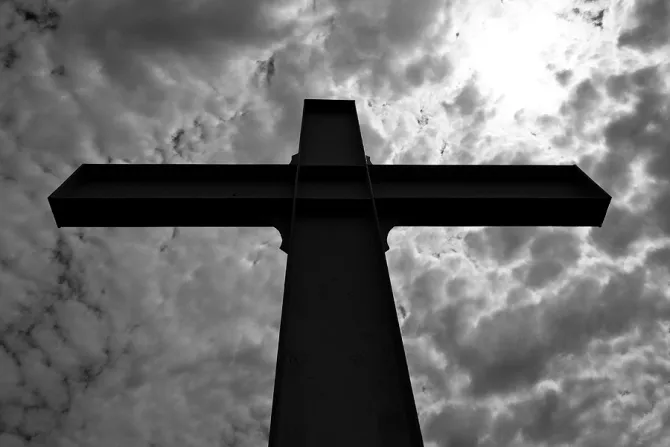Rome, Italy, Nov 15, 2016 / 17:30 pm
Religious freedom is under threat worldwide from phenomena like Islamic "hyper-extremism," but there are also other dangers, a new report from Aid to the Church in Need says.
"The importance of religious freedom is for me the difference between life and death," Father Jacques Mourad said in the report's foreword.
The Christian monk was held by the Islamic State group in Syria for five months before his escape in October 2015.
"Our world teeters on the brink of complete catastrophe as extremism threatens to wipe out all traces of diversity in society," Fr. Mourad said. "But if religion teaches us anything it is the value of the human person, the need to respect each other as a gift from God."
Aid to the Church in Need is an international Catholic pastoral charity. Every two years it publishes a report that analyzes the state of religious freedom in 196 countries.
The latest report, published Nov. 15, covers the period from June 2014 to June 2016.
It shows major threats to religious freedom from the rise of "Islamist hyper-extremism," with the Islamic State group being the prime example.
The extremist phenomenon is described as "a process of heightened radicalization, unprecedented in its violent expression." It is characterized by "an extremist creed and a radical system of law; systematic attempts to annihilate or drive out all groups that don't conform to their outlook, including co-religionists; cruel treatment of victims; use of social media to recruit followers and to intimidate opponents by parading extreme violence."
The report says this hyper-extremism has had "a global impact." It is able to affiliate with extremist groups and has "well-resourced support networks."
The report shows that radical Islamism is on the rise. Attacks have occurred in one out of five countries around the world, including Switzerland, Australia and 17 African countries.
However, the Middle East is the region that is most of all suffering from the rise of this extremism.
Aid to the Church in Need explained: "this hyper-extremism is eliminating all forms of religious diversity and is threatening to do so in parts of Africa and the Asian Sub-continent." It aims "to replace pluralism with a religious monoculture."
This extremism also fueled the refugee crisis in countries like Afghanistan, Somalia and Syria.
Major Islamic leaders have condemned this extremism, speaking out in many public declarations.
Fr. Mourad reflected on the future of religion in the world.
"If we are to break the cycle of violence threatening to engulf our world, we need to replace war with peace," he said. "In this day and age more than ever, it is time to cast aside religious hatred and personal interests and learn to love one another as our faiths call us to do."
Islamic extremism is not the only threat.
(Story continues below)
The report says that countries where one particular religion is identified with the nation state have "stringent religious freedom restrictions." These include Hindu India, Islamic Pakistan and Buddhist Burma.
Aid to the Church in Need highlighted 38 countries where religious freedom at risk. Of these, 23 are ranked among the most at risk.
In 12 of these 23 countries, the threat to religious freedom is driven by non-state actors. There, discrimination and persecution involve organized non-government groups.
Religious freedom has worsened in 37 percent of the world's countries. In 55 percent of the world's countries, there have been no changes on state of religious freedom in comparison with the 2014 Aid to the Church in Need report.
Religious freedom improved just in three countries: Egypt, Bhutan and Qatar.
The worst places in terms of religious freedom are Eritrea and North Korea. In China, religious minorities are considered threats to the stability of the country. This is why the Chinese government pushes for these groups to come under State control, with grave consequences for groups that do not toe the party line.
For instance, in the Chinese province of Zheijang, government authorities issued a series of new rules in 2015 that led to the demolition of crosses and the removal of symbols of faith. According to the new rules, religious buildings cannot be taller than 78 feet. Crosses cannot be placed at the top of the church tower, but they must be placed on buildings' walls. Their size on the wall can only be one tenth the size of the building.
These new rules were part of a campaign to demolish crosses and churches that began in 2013 in Zheijang.
While Chinese officials claimed that the buildings torn down in the demolition campaign violated construction rules, both Catholics and Protestants showed that many of the buildings were built after local authorities had given permission.
Over 2,000 crosses and churches had been destroyed by March 2016.
The process of "Sinicization," that is, making everything Chinese, has harmed other religions. In China's Xinjiang region, Muslims who were students, teachers and civil servants were forbidden to fast during Ramadan.
Aid to the Church in Need's 2014 report had found religious freedom dwindling in Europe and the U.S., mainly due to pressure from extreme feminist and LGBT lobby groups.



